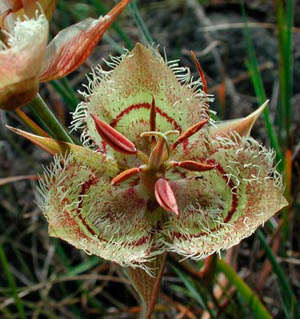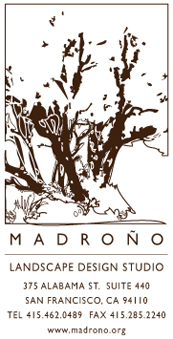 Daily we drive our cars or ride the bus to the city, glad for modern transportation yet melancholy for the fate of paved-over Nature, a presumed paradise lost. But pockets of the original wilderness still flourish among our Bay Area motorways, just as a rare flower might sprout unnoticed in the middle of a sun-baked field. These natural sanctuaries are portals that can transport us to an earlier time. In Marin County, for example, where the Tiburon peninsula meets the mainland, surrounded by Corte Madera's housing developments and adjacent to Hwy. 101, the open space preserve at Ring Mountain sustains a living connection with history, a lifeline to yesterday's forgotten truths.
Daily we drive our cars or ride the bus to the city, glad for modern transportation yet melancholy for the fate of paved-over Nature, a presumed paradise lost. But pockets of the original wilderness still flourish among our Bay Area motorways, just as a rare flower might sprout unnoticed in the middle of a sun-baked field. These natural sanctuaries are portals that can transport us to an earlier time. In Marin County, for example, where the Tiburon peninsula meets the mainland, surrounded by Corte Madera's housing developments and adjacent to Hwy. 101, the open space preserve at Ring Mountain sustains a living connection with history, a lifeline to yesterday's forgotten truths.
Most of present-day Ring Mountain once lay under the sea during the age of dinosaurs. Then oceanic volcanoes and tectonic movements caused massive disruptions, and the floor of the Pacific Ocean crashed into the North American plate. For a hundred million years, at the speed of one foot per decade, the collision sheared off white pillow lava and red radiolarian chert from the seabed and thrust it into the leading edge of the continent. Submarine landslides contributed tiers of primordial sand and mud (greywacke and shale), while high-pressure blueschist metamorphics like serpentinite and lawsonite bubbled up from deep inside the earth. These soapy-textured stones -- mixed with thick layers of lava and petrified microscopic sea creatures fractured and buckled over eons -- have brought a legion of contemporary geologists here to read the story of deep time written in Ring Mountain's exposed rocky strata.
Growing on those serpentine odes, a native grassland tells more recent tales measured in mere thousands of years. Drought-tolerant perennial bunchgrasses push their roots twenty feet deep into the hillside, both physical and metaphoric anchors once revered by those who lived here and now all but forgotten. Their light green shoots in spring turn deeper colors in summer, and their long graceful culms nod in the breeze with a shimmering inflorescence. By nature of their adaptation to this toxic serpentine soil, these long-lived grasses were spared the invasion of exotic annuals that so transformed the majority of our state's remaining natural areas. Here we see California as it was before the superhighway and the shopping center, before the industrial farm and the rancho, prior to the arrival of the white man.

